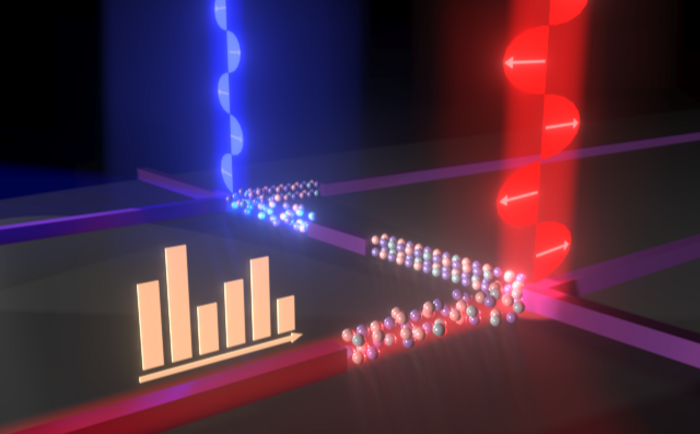Reviewed by Alex SmithJun 16 2022
The latest study employs multiple polarization channels for parallel processing, increasing computing density through several orders of magnitude over traditional electronic chips.
 Hybridized-active-dielectric (HAD) nanowire that can polarization-selectively switch the device states and perform photonic computing. Image Credit: June Sang Lee, Department of Materials, University of Oxford
Hybridized-active-dielectric (HAD) nanowire that can polarization-selectively switch the device states and perform photonic computing. Image Credit: June Sang Lee, Department of Materials, University of Oxford
Scientists from the University of Oxford have developed a technique for using light polarization to maximize data storage density and computing effectiveness using nanowires in a paper published in Science Advances.
Light has a utilizable property — different wavelengths of light do not engage with each other — a characteristic used by fiber optics to bring parallel streams of data. Correspondingly, distinct polarizations of light do not engage with each other either.
Each polarization can be used as a separate information channel, allowing more data to be stored in various channels and significantly increasing information density.
We all know that the advantage of photonics over electronics is that light is faster and more functional over large bandwidths. So, we aimed to fully harness such advantages of photonics combining with tunable material to realize faster and denser information processing.
June Sang Lee, Study First Author and DPhil Student, Materials, University Of Oxford
In collaborative efforts with Professor C David Wright of the University of Exeter, the research group created a HAD (hybridized-active-dielectric) nanowire with switchable material properties when illuminated with optical pulses. Since each nanowire responds selectively to a particular polarization direction, data can be processed using numerous polarizations in distinct directions at the same time.
Using this idea, scientists have created the first photonic computing processor to use light polarization.
Photonic computing uses various polarization channels, which increases computing density by many orders of magnitude over traditional electronic chips. Since nanosecond optical pulses manipulate these nanowires, computing speeds are increased.
Packing more transistors into a particular size of an electronic chip has been the go-to method of increasing computing density since the discovery of the first integrated circuit in 1958 — the so-called “Moore’s Law.”
Moreover, with Artificial Intelligence and Machine Learning demanding specialized hardware that is pushing the boundaries of traditional computing, the dominant concern in this field of electronic engineering has been “How do we pack more functionalities into a single transistor?”
For more than a decade, scientists in Professor Harish Bhaskaran’s lab at the University of Oxford’s Department of Materials have been investigating the use of light as a computing medium.
This is just the beginning of what we would like to see in the future, which is the exploitation of all degrees of freedoms that light offers, including polarization to dramatically parallelize information processing. Early-stage work, but super exciting ideas that combine electronics, non-linear materials, and computing. Lots of exciting prospects to work on which is always a great place to be in!
Harish Bhaskaran, Professor, Materials, University Of Oxford
Journal Reference:
Lee, J. S., et al. (2022) Researchers develop the world’s first ultra-fast photonic computing processor using polarization. Science Advances. doi.org/10.1126/sciadv.abn9459.